Acquired obesity is associated with changes in the serum lipidomic profile independent of genetic effects--a monozygotic twin study
- PMID: 17299598
- PMCID: PMC1789242
- DOI: 10.1371/journal.pone.0000218
Acquired obesity is associated with changes in the serum lipidomic profile independent of genetic effects--a monozygotic twin study
Abstract
Both genetic and environmental factors are involved in the etiology of obesity and the associated lipid disturbances. We determined whether acquired obesity is associated with changes in global serum lipid profiles independent of genetic factors in young adult monozygotic (MZ) twins. 14 healthy MZ pairs discordant for obesity (10 to 25 kg weight difference) and ten weight concordant control pairs aged 24-27 years were identified from a large population-based study. Insulin sensitivity was assessed by the euglycemic clamp technique, and body composition by DEXA (% body fat) and by MRI (subcutaneous and intra-abdominal fat). Global characterization of lipid molecular species in serum was performed by a lipidomics strategy using liquid chromatography coupled to mass spectrometry. Obesity, independent of genetic influences, was primarily related to increases in lysophosphatidylcholines, lipids found in proinflammatory and proatherogenic conditions and to decreases in ether phospholipids, which are known to have antioxidant properties. These lipid changes were associated with insulin resistance, a pathogonomic characteristic of acquired obesity in these young adult twins. Our results show that obesity, already in its early stages and independent of genetic influences, is associated with deleterious alterations in the lipid metabolism known to facilitate atherogenesis, inflammation and insulin resistance.
Conflict of interest statement
Figures

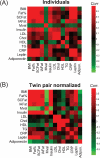
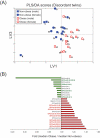



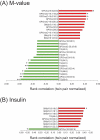
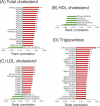
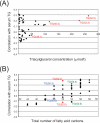
References
-
- Obesity: preventing and managing the global epidemic. Report of a WHO consultation. World Health Organ Tech Rep Ser. 2000;894:I-xii: 1–253. - PubMed
-
- Yusuf S, Hawken S, Ounpuu S, Dans T, Avezum A, et al. Effect of potentially modifiable risk factors associated with myocardial infarction in 52 countries (the INTERHEART study): case-control study. Lancet. 2004;364:937–952. - PubMed
-
- Ohlson LO, Larsson B, Svardsudd K, Welin L, Eriksson H, et al. The influence of body fat distribution on the incidence of diabetes mellitus. 13.5 years of follow-up of the participants in the study of men born in 1913. Diabetes. 1985;34:1055–8105. - PubMed
-
- Taskinen MR. Type 2 diabetes as a lipid disorder. Curr Mol Med. 2005;5:297–308. - PubMed
-
- Wenk MR. The emerging field of lipidomics. Nat Rev Drug Discov. 2005;4:594–610. - PubMed
Publication types
MeSH terms
Substances
Grants and funding
LinkOut - more resources
Full Text Sources
Medical

